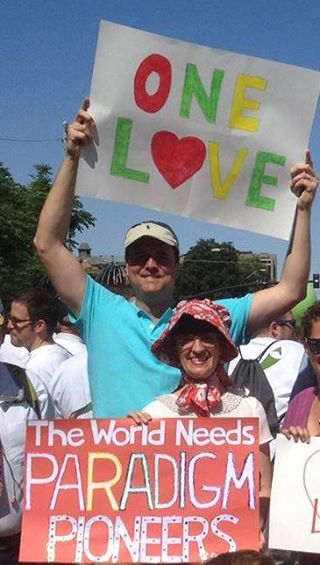Here are a few things I learned from the disciplinary action Kate Kelly and John Dehlin are threatened with:
- The Ninth Article of Faith can pretty much be blotted out of the canon. As of 1842, there may have been “great and important” things still to be revealed. As of 2014, they have all been revealed, and we have no need of addressing new questions or receiving new revelation.
- Jesus has been overruled. He said we should ask, seek, and knock. He was out of line. Asking is apostasy. The new rule is that your Father knoweth what things ye have need of before ye ask him, so shut up!
- Our God is a Correlated God. We don’t even need to limit ourselves to looking to scripture or prophets’ statements now to see the will of God. We simply need to look at the status quo in the Church to know God’s very mind. If there are organs and basketball hoops in our buildings, it is because God wills it. If lesson manuals are printed on 8 1/2 by 11 inch paper, it is because God wills that. And if, with no scriptural or prophetic basis, we have banned women from holding the priesthood, God must have willed that too.
- Dieter F. Uchtdorf’s “Come, Join with Us” wing of the Quorum of 15 isn’t as strong as Dallin H. Oaks’s “Would You Just Please Leave?” wing.
- The PR department really is running the show in the Church. Kate’s informal discipline letter chastises her for “acting in public opposition to the Church and its leaders after having been counseled not to do so.” Which leaders? Who counseled her not to have OW events? Her local leaders never wanted to meet with her. And of course general leaders made a point of ignoring her requests to meet. That leaves only the PR department. She went against the PR department’s counsel, and acted in opposition to the PR department, so she’s being disciplined.
- The PR department clearly doesn’t even care to try to be subtle with lying anymore. The blatant misrepresentation of the OW event was bad enough, but at least it could only be refuted by people who were there. But the claim that the disciplinary actions are completely local is just absurd. That they would say this knowing that it’s not remotely believable is depressing.
- The Church really isn’t Kate Kelly’s or John Dehlin’s or yours or mine. It’s President Monson’s and maybe the FP and Quorum of Twelve’s a little bit. If they and the PR department decide they want to excommunicate people for asking questions too persistently, they can do that. If they decide to excommunicate people for wearing pants, or for being left-handed, they can do that too. There’s not really any check on how ridiculous they can be.
- The Church is not a safe place for people who have questions. Perhaps it never was, and I’m only now seeing its true nature revealed. It could have gone other ways, though. There are scriptures and words of prophets that could support a more inclusive version of the Church. But I’m afraid these disciplinary councils will cast a long shadow for a long time on any attempts to push for that. I am so sad. I had hoped for so much better.

